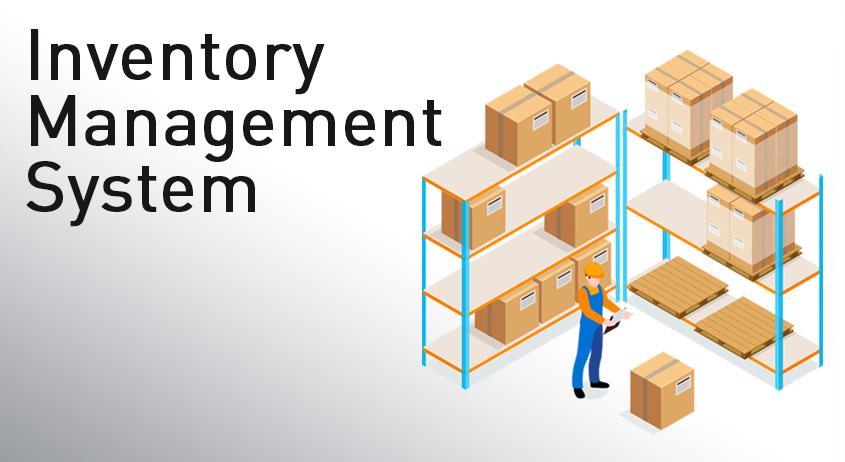
To me, the benefits of inventory management software are very clear:
- Achieve efficiency and productivity in operations.
- Minimise inventory costs and maximize sales & profits.
- Integrate your entire business.
- Automation of manual tasks.
- Maintain customer happiness.
1. Efficiency & Productivity in Operations
Keeping stock means tying up your money in them. You can’t spend this money.
You want efficiency in managing your stock levels so that your business is cash flow positive. We all know what happens when your business runs out of cash, never mind profits.
Also, analytics and reports can help you see what products are selling fast through your multiple sales channels. This helps you make smarter purchasing decisions and you might be able to spot a trend or two!
Do you need to manage product and batches and expiry dates?
This is important for the health, beauty and pharmaceutical industries.
How about managing multi-matrix product variants? Or handling complex units of measurement?
All these are possible with an inventory management solution.
2. Minimise Costs, Maximise Sales & Profits
You need to manage orders across your sales channels. This way you can minimise the loss of sales when, say, you need to restock the next big thing for the holiday season.
Inventory control is also critical if you want to minimise the carrying costs of holding stock. Keeping stock in warehouses is expensive!
3. Integration of Entire Business
Let’s say your sales rep closes a sale and creates a sales order. Inventory management software lets the rest of your company work with it as it makes its way from sales to fulfillment.
Let’s see how this is done.
Firstly, user management. You create user accounts for each staff in your company’s departments: management, administration, sales, purchasing, and fulfillment.
You define job roles and then assign user permissions to each user. Thus, they only have access to modules and functions for their job responsibilities. This prevents them from having access to stock adjustments or transfers, for example, or from viewing confidential financial reports.
Secondly, tasks and notes enable collaboration between members of your team. Your staff can seamlessly share and handover information. Collaborate on customers, suppliers, products, invoices, sales orders and shipments.
Everyone has full visibility in the order until it is fulfilled.
Thirdly, for fulfillment, your operations team can easily create a shipment. They can then pack all the items and quantity in the sales order that has not yet been shipped. Within the delivery order, they can also issue picking and packing lists to the warehouse team to ship. When the order has been received by the customer, the team can mark it as delivered.
Finally, your accountant can filter sales orders by their shipment status.
The finance department can then issue invoices for those orders that have been shipped. These same customer invoices can be quickly listed and marked as paid when payment is received. Or have a credit note issued to the customer for product returns.
4. Automation of Manual Tasks
Nobody wants to be sitting around doing manual data entry tasks or complex manual calculations with every purchase order. It’s best to leave it to software to automate these common tasks for you.
mbrace barcode scanning technology. Create sales orders straight away by scanning the items in the shipment. Or dispatch goods in a shipment by scanning them too.
Some common bugbears faced by wholesalers and distributors include the calculation of landed costs.
How do you apportion additional costs like shipping and customs duties?
Inventory management software should automatically split landed costs by the proportion of the purchase cost of the product, saving you time, effort and mistakes.
Also, how about B2B ecommerce?
What if your regular customers could buy from you 24/7?
They can by using a B2B ecommerce platform that lets you open a purchasing account for customers along with personalized product listings and custom price lists.
Customer checkout their purchases using an online cart. Purchases automatically appear as sales orders in your system. This saves you selling time and needless data reentry.
Are you constantly traveling while managing your business remotely?
Software should let you email quotations and sales orders directly while on the go.
Documents in PDF format ensure cross-platform compatibility. And they translate well into foreign languages as well.
5. Keeping Customers Happy!
How on earth does inventory management keep my customers happy?
Well, it reduces your time to fulfillment for a start. With an inventory management system you’re able to keep fast-selling products in stock (from your analytics and reports remember?) and fulfill them immediately.
Who would you rather buy from?
A seller with ready stock to ship immediately? Or one that takes 2–5 days to order stock before shipping it out? A customer that receives an order quickly is definitely a happy customer.
And what about returns and exchanges?
Your system should handle these graciously. Instant support satisfaction!
Where Do I Get An Inventory Management System?
Sprinter: Use the world’s leading cloud-based inventory tracking software to perform inventory audits, avoid stockouts and maintain inventory levels. Real-time data and analytics keep you in charge of your inventory at all times.
End to End Inventory Tracking
Checkouts & Reservations
Keep an eye on inventory checkouts and plan out reservations.
Reports
Draw actionable reports on utilization, checkouts, POs, and more.
Purchase Orders
Manage and track asset purchase orders, vendors, and lifetime costs.
Alerts Notifications
Customize alerts to manage stock with ease, and get alerted when stock is low.
